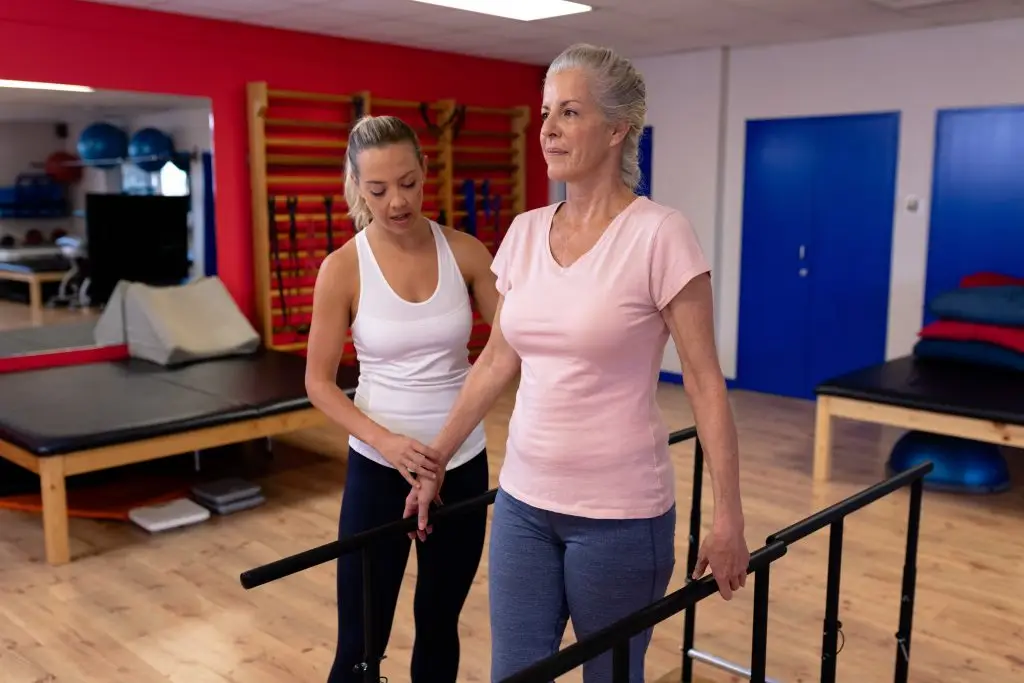Your balance and gait are your ability to stand upright without losing balance as well as the pattern and rhythm with which your limbs move while you walk. For many people, balance and gait come naturally, but if you’re suffering from a neurological or musculoskeletal injury, you may find yourself having to concentrate extra hard on keeping your balance while standing or moving, or on maintaining a normal gait as you walk.
Balance, gait, and your body’s vestibular sense are complex, inter-connected systems that can cause a wide variety of symptoms when they don’t work properly. Many of these symptoms overlap with different conditions that require an expert’s evaluation to diagnose and treat, rather than hoping it will get better on its own. And as anyone who has experienced chronic balance issues or who has trouble walking naturally knows, these symptoms can drastically disrupt your quality of life.
Fortunately, physical therapy is a proven, non-invasive, non-pharmacological treatment option for many balance and gait disorders.
Types of balance disorders
From deconditioning to inner ear issues, a number of organs and body systems can affect your overall balance and sense of up and down. Common types of balance disorders include:
- Vertigo
- Meniere’s disease
- Vestibular neuronitis
- Labyrinthitis
While some of these conditions are caused by inner ear infections or inflammation, they can have a neuromuscular effect in the long term that can be alleviated with physical therapy.
Symptoms of balance disorders
The most common symptoms that could indicate you’re suffering from a balance disorder include:
- Unsteadiness while walking or standing
- Dizziness
- Vertigo and/or dizziness
- Lightheadedness
- Motion sickness
- Double vision
- Difficulty perceiving where body parts are in space
Due to the neurological nature of many of these symptoms, people who experience balance disorders often also experience panic, disorientation, fatigue, and anxiety and depression due to how their perception of reality is altered.
Types of gait disorders
The human gait is as unique as any person’s fingerprint. This can make it difficult to describe a “normal” gait outside of very basic descriptions of how we all walk. These are a few of the clinically defined gait disorders:
- Spastic gait
- Cautious gait
- Freezing gait
- Propulsive gait
- Steppage gait
- Waddling gait
Symptoms of gait disorders
Falls are a major indicator of gait disorders, but so are sudden changes in the natural movement of a person while walking, whether they are aware of the change or not. Any of the following can be a symptom of a gait disorder or other condition affecting the musculoskeletal system:
- Irregular rhythm when walking
- Dramatically slowed walking speed
- Difficulty standing from sitting
- Inability to walk in a straight line
- Increase in number of falls
As physical therapists, we’re here to help prevent falls and further injury by treating gait disorders with a comprehensive and personalized treatment plan to meet your needs and your abilities.
How physical therapy can help your balance and gait
Balance and gait disorders are complex issues that often require multiple interventions. When helpful, we offer the following treatment plans to complement your overall recovery from these conditions:
- Balance training
- Vestibular rehabilitation
- Manual therapy
- Gait training
- Strengthening
If you or a loved one is struggling through life with vestibular, balance, or gait problems, you’re not alone and we’re here to help. Take the first step by calling the nearest clinic location or contacting us online to schedule your one-on-one appointment today.
